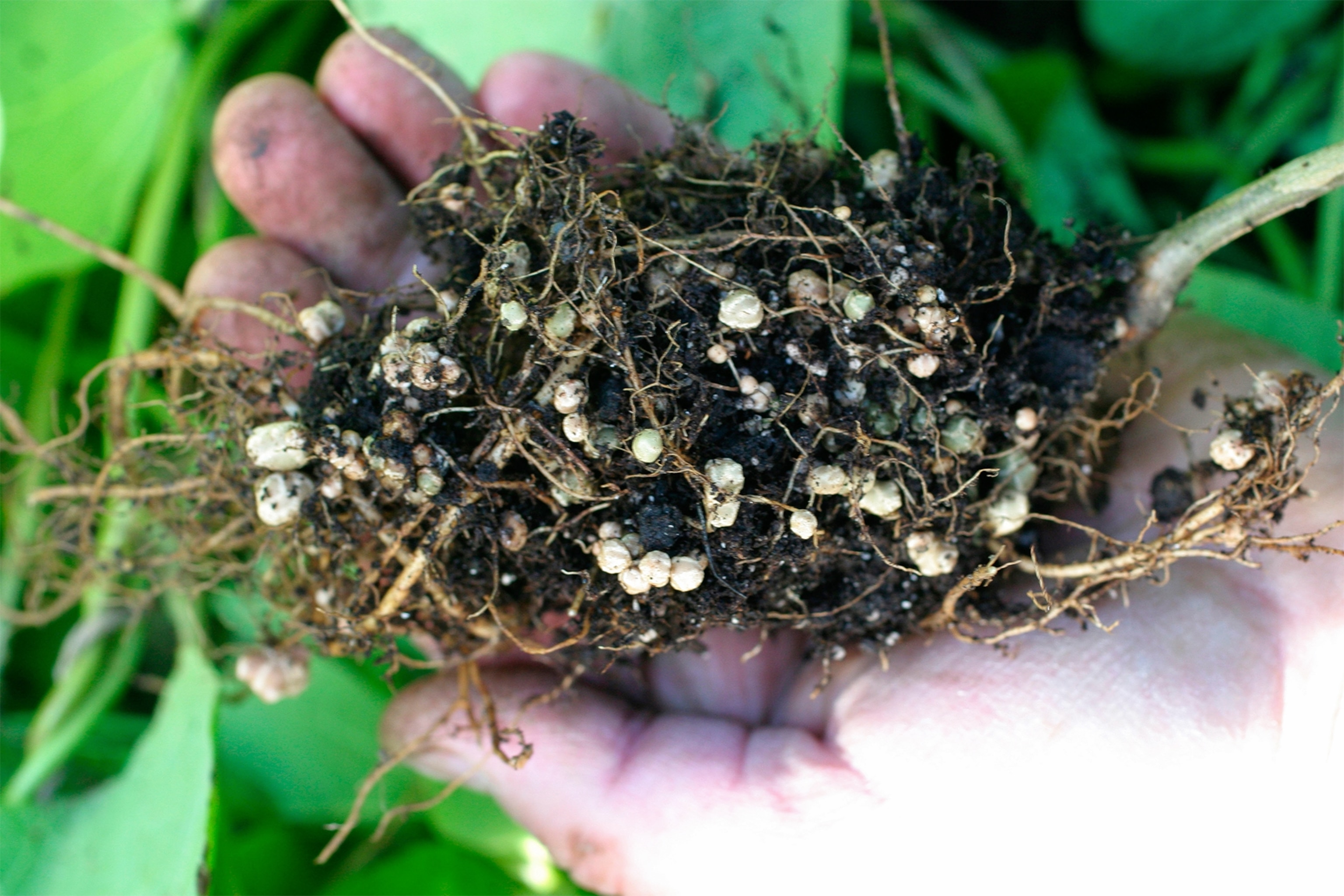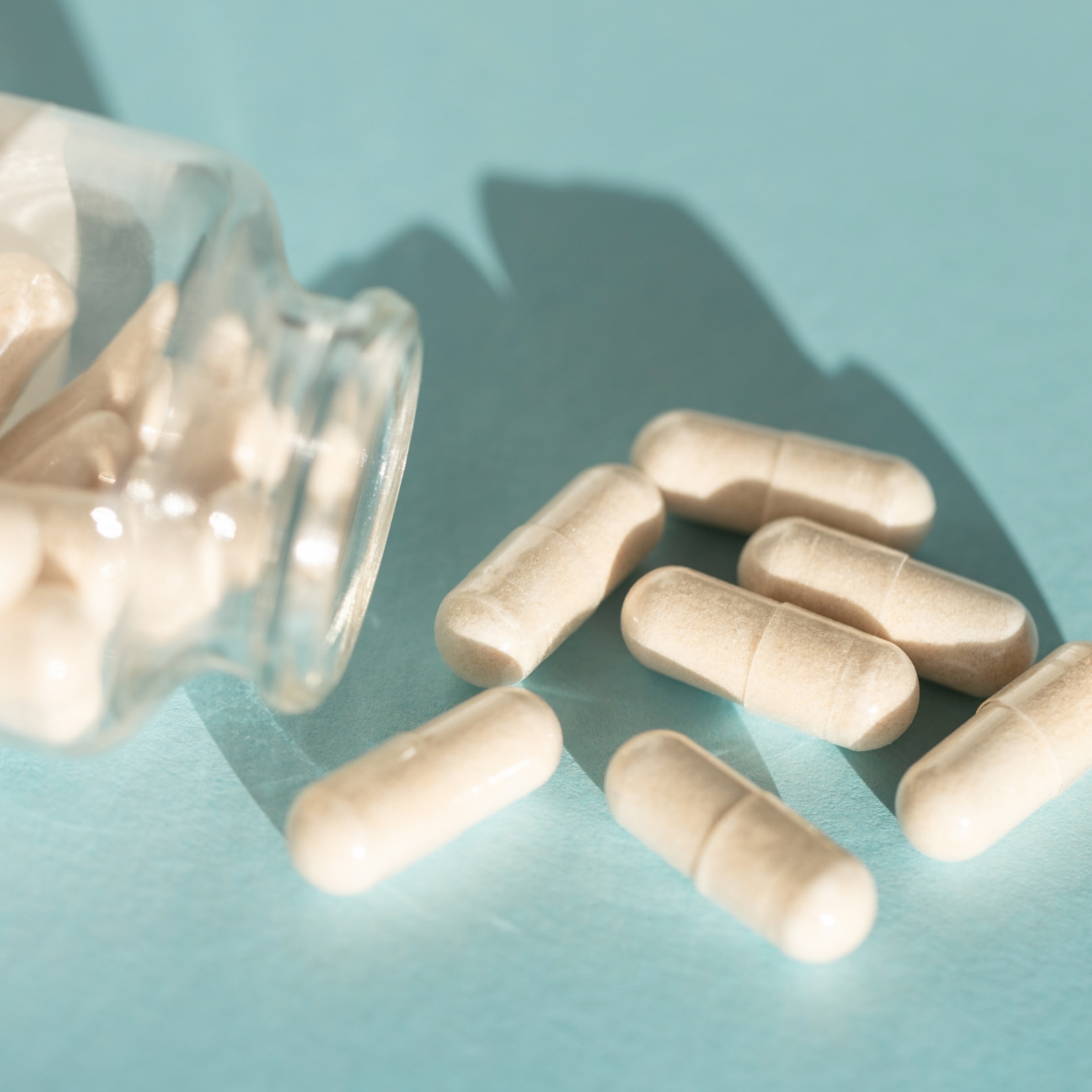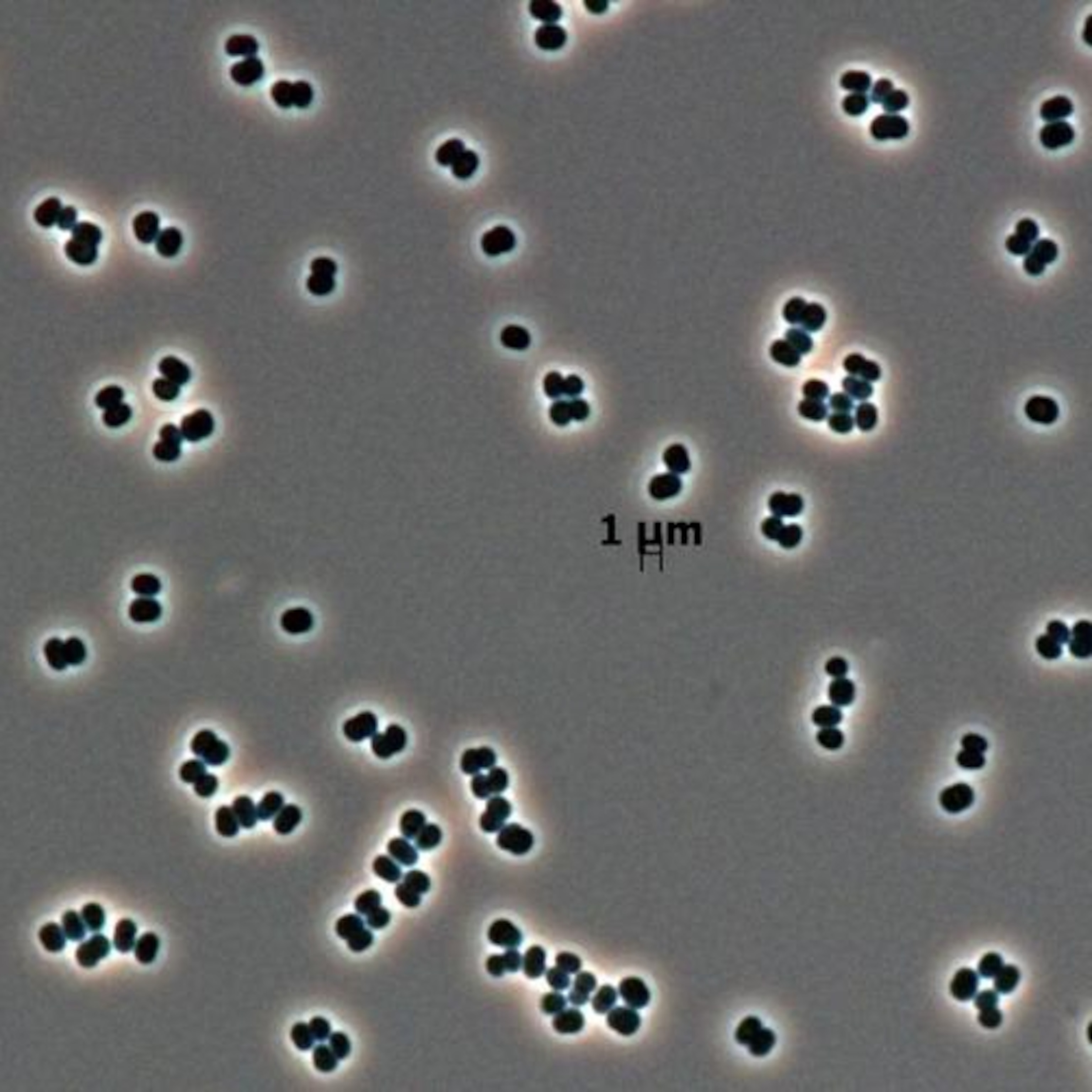
Why Tiny Microbes Mean Big Things for Farming
The soil-dwelling bacteria that we walk on every day are working their way into technologies that could help feed the world.
On a frigid day last February, Maren Friesen drove eight hours across snow-covered plains to Centralia, Pennsylvania. A fire ignited a seam of coal below the town in 1962, and more than 50 years later it's still smoldering away underground. The place is a steaming wasteland—one that may hold a key to feeding the world.
Friesen, a microbiologist, is on a hunt for a microbe thought to live in these strange, hot soils. The humble bacterium has an unusual ability that may help farmers grow more crops.
More than a decade ago, German scientists described the elusive bacterium, known as Streptomyces thermoautotrophicus, which has a special knack for converting nitrogen from the air to a form that plants can use—even in the presence of oxygen, which normally poisons the bacterial enzyme that pumps out nitrogen. The process is called "fixing" nitrogen.
But after the initial finding about the bacterium, it apparently went missing. If it can be found again, and its abilities engineered into plants that normally can't fix nitrogen, farmers could grow more crops using less fertilizer.
And this bacterium is just one of many that could change farming. Among the millions of microorganisms right under our feet could lie many untapped tools for improving agriculture. These microbes are already making soils fertile and helping plants grow, and scientists hope to employ them, or at least borrow their skills, to boost crop yields.
Now, both university researchers and major agricultural companies are looking for new ways to use soil bacteria. Some hope to genetically engineer plants with microbial genes or to breed plants that better interact with beneficial soil microbes, and thus change the makeup of microbial communities to spur plant growth. Startups and established companies are racing to market microbial cocktails and so-called biologicals to do just this.
Friesen admits that the idea of engineering plants with bacterial skills sounds bold—both speculative and spectacular. That was the point. The first green revolution, which started in the 1950s, had nearly doubled yields.
"If we can harness the ability of microbes to fix atmospheric nitrogen for crop production," she says, "that would potentially precipitate the second green revolution." (Read "The Next Green Revolution" in National Geographic magazine.)

Quest for a Missing Microbe
Earlier this year, Friesen and a researcher in her laboratory, Jeff Norman, spotted an active vent on a hillside, where the snow had melted from the heat. The earth was hot to the touch, and escaping plumes had detectable levels of carbon monoxide—prime habitat for the species they are trying to rediscover. The two collected soil samples into Ziplock bags, hoping they'd caught their bacterial prey.
In a sense, their quest to find the missing microbe is a twist on an ancient microbial partnership. Legumes—such as beans, soybeans, alfalfa, peanuts, and peas—already live in a cozy, symbiotic relationship with nitrogen-fixing root microbes. Secretions from the plants' roots protect these bacteria from oxygen, which would shut down their nitrogen-fixing activity, and the plants provide microbes with carbon in exchange for nitrogen. That's why farmers traditionally grow those crops to make soils more fertile. But most crops that the world relies on for food, including corn, wheat, and rice, completely lack the ability to recruit and then foster these bacterial helpers in their roots.
That's why S. thermoautotrophicus is special. Unlike other nitrogen-fixing bacteria, it can work its magic in the presence of oxygen, which greatly extends the kinds of plants it can work with. It might mean that the nitrogen-fixing relationship could be extended to corn, rice, wheat, and all the world's major cereal crops.
Today, farmers use far more nitrogen than nature can provide and rely on a 20th-century invention, known as the Haber-Bosch process, that pulls nitrogen from the air to create synthetic fertilizers. The industrial process to convert nitrogen gas to ammonia is costly and grossly inefficient (using something like 2 percent of the world's total annual energy supply) and accounts for about 40 percent of the total nitrogen in the protein people eat.
Friesen's project is fostering radical new approaches to the long-standing problem. "The plant microbiome is, in many ways, the final frontier in agriculture," says Wayne Parrott, a soil scientist. "Until now, it's been out of sight and out of mind."
The mission to find elusive bacteria in fiery underground regions is only the first step. Step two will involve complex biological engineering: finding the genes in the bacteria that are responsible for nitrogen fixation in oxygenated conditions, and then engineering them into plants in a way that the plants can use to create the same traits.
"I don't want to give the impression that if we find a novel enzyme, we can stick it into plants and suddenly everyone will be able to grow corn without fertilizer," Friesen says. "It's going to be a much longer process than that."
Friesen says it is premature to announce major findings. "Even if it doesn't exist, it's kind of like, How do you know there are no white crows in the world? We're trying to keep an open mind and be realistic about what we might find."

Microbes to Feed the World
To researchers, soil microbes offer new opportunities to boost yields in other ways too—by fending off specific stresses such as insect pests and diseases, improving access to nutrients, or reducing the need for synthetic nitrogen fertilizer. (Read "Our Good Earth" in National Geographic magazine.)
Soils contain a mind-boggling diversity and abundance. And leaves are the single largest biological surface on land, with a whopping 100 septillion (10^26) cells; this, of course, can make astronomy look like a pitiful science.
It's increasingly possible to unlock the metabolic potential of this vast, largely untapped resource, says Jack A. Gilbert, a researcher at Argonne National Laboratory in Illinois and leader of the Earth Microbiome Project, an ambitious attempt to catalog the diversity of microbial life.
"That should help us to grow tougher, more resilient plants," Gilbert says. "But we are going to need to do a lot more work characterizing the relationships between plants and microbes."
Like in the human microbiome—the tens of trillions of microbes living inside us—distinct communities form in different parts of the plant. The rhizosphere, for instance, or the area surrounding the roots, contains some 30,000 species in some plants with a community mix that varies across plant cultivars and soil types.
Yet we know very little about them. "People have been studying the human gut for much longer with a lot more firepower," says Jeff Dangl, a researcher at the University of North Carolina, in Chapel Hill, who is studying microbes that live in roots. "If you're thinking, 'How in the hell do a hundred different taxa of bacteria get inside the root and are allowed to persist there?' the answer is we have no clue."
As such, Dangl believes it will be a challenge to unravel plant-microbe interactions and identify the different microbial strains to prevent a fungus, such as wheat take-all, from infecting and killing crops. "If you had a mix of microbes you could deploy, then you'd have a better chance that at least one of them would work," he says.

The Biologicals Boom
Getting small is already big business. The new biologicals take many forms: Some can be sprayed like the biological equivalent of chemical pesticides, herbicides, or insecticides. Sprays and seed coatings derived from naturally occurring microorganisms can also act as catalysts to enhance nutrient intake and stimulate growth.
For farmers, it's not simply about boosting plant health; they need to see a sufficient yield to justify the added expense, and, as one trade report from investment bank Piper Jaffray put it recently: "In many ways the industry is tracking in a similar manner to the seed industry in the 1980s as it is just waiting for one blockbuster product to open up a multi-decade stretch of unrelenting growth."
For instance, last month, Monsanto and Novozymes held a field day in Iowa to announce "transformational microbial products" that improved yields for corn and soybeans in field trials.
In recent years, Bayer acquired a bacterial seed treatment called Poncho/VOTiVO; Syngenta bought a company that controlled nematodes on soybeans with a bacterial seed coating that is toxic to the parasite. Others are working on fungal organisms that can enhance drought tolerance in corn. The advances are not expected to replace genetic modification or traditional breeding, but are seen as additional tools to feed the growing world.
Pam Marrone, who worked as an entomologist with Monsanto and is now CEO of Marrone Bio Innovations in Davis, California, has been developing new pesticides against a range of insects and mites derived from soil bacteria. Biologicals, she told me, are finally being recognized as the next big thing in agriculture. "It's like we're really at the tipping point," she says.
While 40 to 50 percent of our drugs are from natural sources, such as from plants and microbes, she says, only 11 percent of pesticides are. "There have been a lot of bio-prospectors in the drug world ... There's only a small percentage of pesticides that have been from the natural world, and so there's a lot of opportunity."
Correction: An earlier version of this story misstated the number of years since the Centralia coal fire began burning. It has been burning for more than 50 years.
Follow Peter Andrey Smith on Twitter.








